Reviews
Juergen Teller Shines a Light on a Lesser-Known Side of Robert Mapplethorpe
We met with the photographer to discuss his exhilarating curatorial debut.
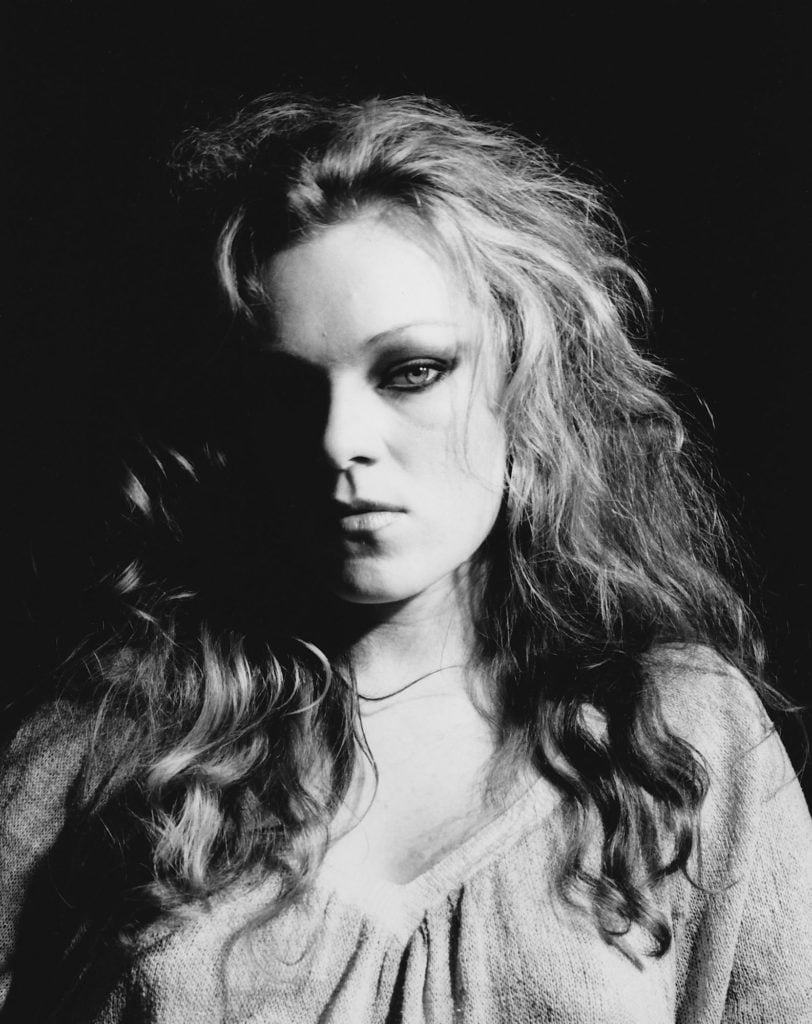
We met with the photographer to discuss his exhilarating curatorial debut.

Lorena Muñoz-Alonso

Last night, an exhibition of work by Robert Mapplethorpe curated by Juergen Teller opened at London’s Alison Jacques gallery, gathering a throng so huge that it packed the gallery rooms and spilled out towards Berners Street. Cash-strapped (yet fashionable) kids sipping on free beers rubbed shoulders with collectors, dealers, and celebrities, including the actress Pamela Anderson, in a rare blend of modern bohemianism, wealth, and beauty that would have surely delighted the late American photographer.
This coming together of two iconic and much-loved cultural figures sees two photographers who possess the rare ability to straddle the worlds of art and fashion, commanding the same respect for their shows in top museums and galleries as for their more directly commercial works, be it commissioned portraits or fashion editorials.
For this reason and for many others—including their shared penchant for revealing (self)portraits and their capacity to seamlessly mix the glamour of high society with the cool grit of the underground—having Teller curate a Mapplethorpe exhibition seemed to most, from the get-go, like a match made in heaven. The show, however, surpasses the already high expectations.
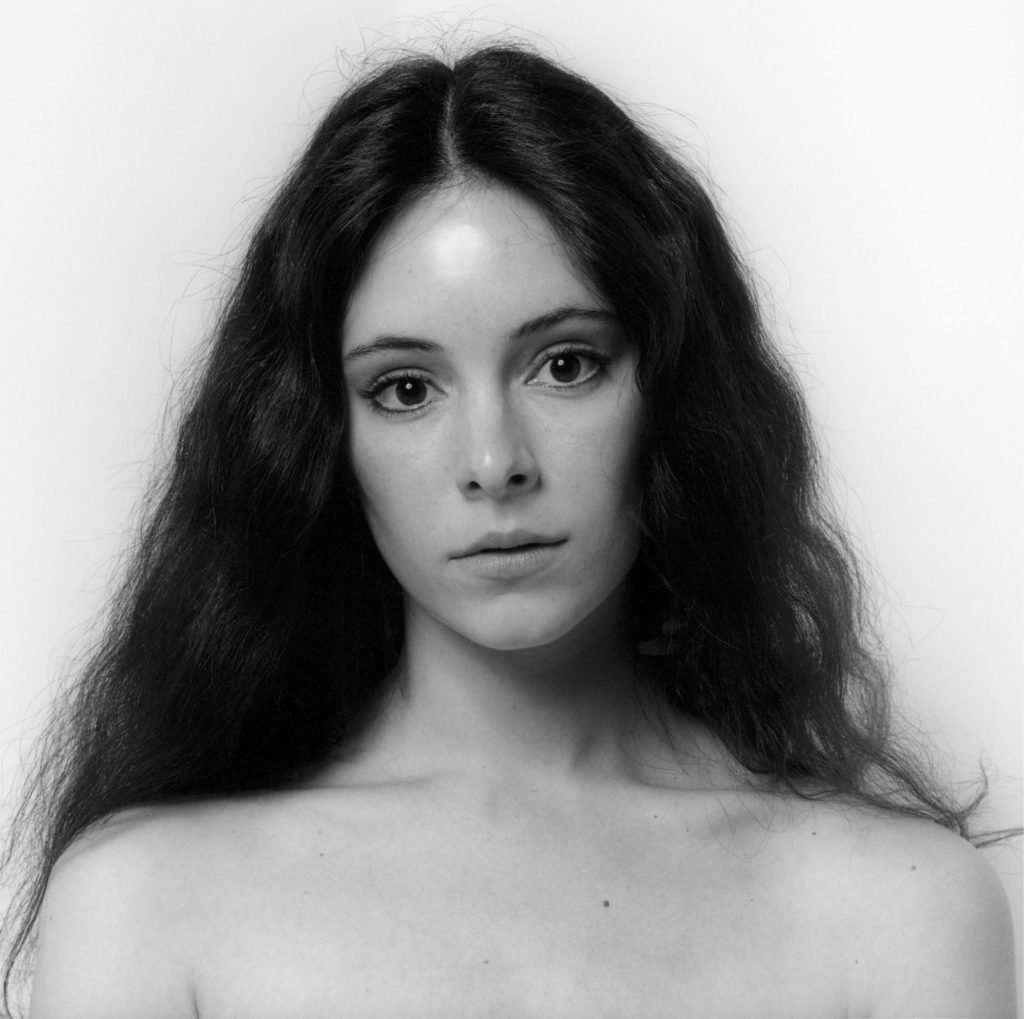
Robert Mapplethorpe, Madeline Stowe (1982). Photo ©Robert Mapplethorpe Foundation. Used by permission. Courtesy Alison Jacques Gallery, London.
Through careful research, but clearly guided by instinct, Teller has managed to create a new reading of Mapplethorpe’s work, one not centering on his flowers or his S&M and sex series (although there’s a number of explicit images in the show). Instead, Teller gives us a Mapplethorpe that is mellower, romantic even, with portraits of actresses Madeleine Stowe and Lisa Marie floating ethereal like Pre-Raphaelite beauties; a tiny little kitten wedged on the side a sofa; or a number of photos of children—including Susan Sarandon’s daughter, Eva Amurri—all revealing a softer, brighter take on the world.
What really makes the selection stand out, however, is Teller’s exquisite hang. A ghostly nude of Carol Overby squinting in the sun is placed next to a photo of a man whose lips are pinched with an army of clothespins, and a portrait of a dog, Muffin, next to it, lazily looking upwards as it lounges on a sofa. It’s one of the most perfect examples of the careful groupings devised by the photographer, who has created perfectly balanced, stand-alone constellations that offer new insights into Mapplethorpe’s oeuvre.
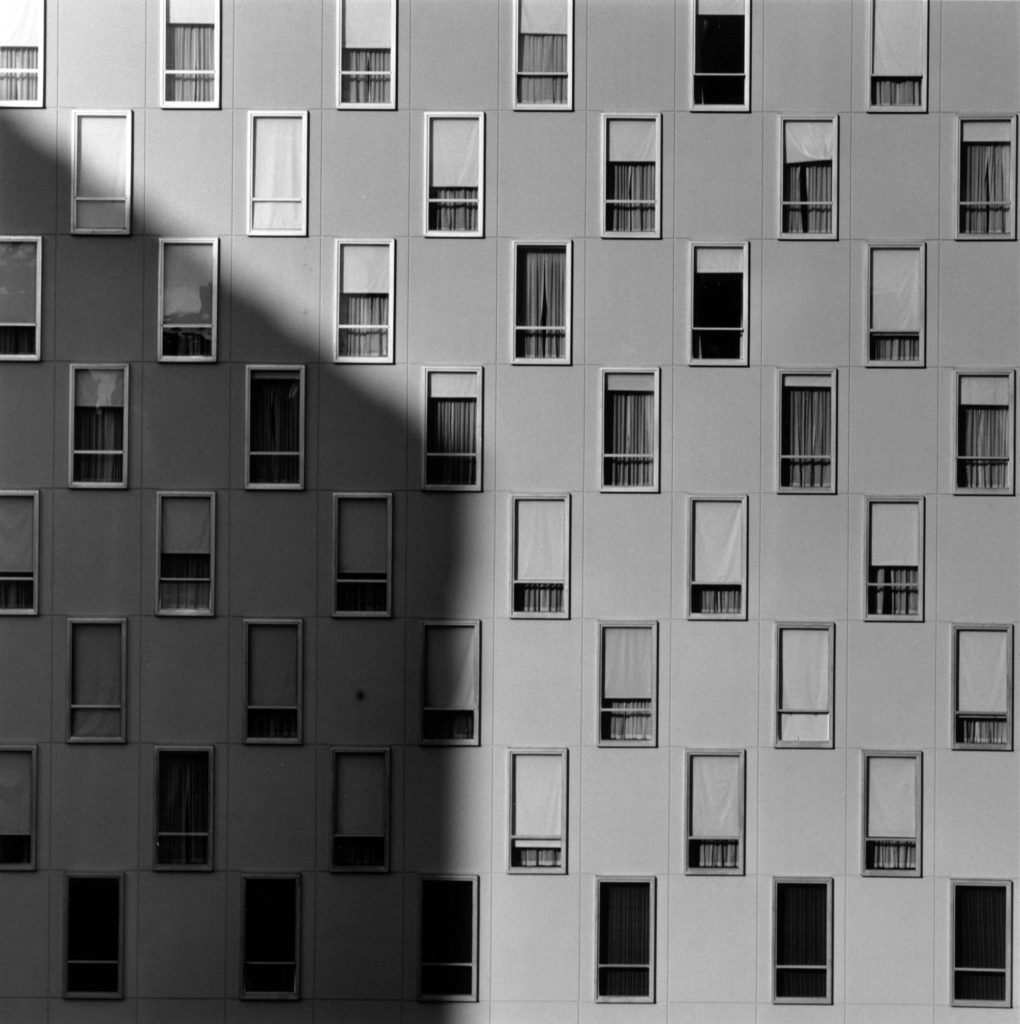
Robert Mapplethorpe, Apartment Window (1977). Photo ©Robert Mapplethorpe Foundation. Used by permission. Courtesy Alison Jacques Gallery, London.
artnet News met with Teller at the gallery to discuss his love for Mapplethorpe’s works, how he felt about stepping into the role of curator, and why brave photography is important in times of political uncertainty.
What was your relationship with Mapplethorpe’s body of work before undertaking this show?
I am not a collector, at all, but about 12 years ago I bought Man in Polyester Suit. I don’t know what came over me, but I saw it and thought “That’s good!” I kept thinking about it, and I spoke to my wife at the time, and she said she knew the director of the Robert Mapplethorpe Foundation, Michael Stout, and that we should ask him about it, so we did. It’s such an iconic picture, one of his most famous photographs. I was completely surprised that it was it still available, I was even more surprised about how cheap it was. I mean, it was cheap! My edition comes out of a portfolio, in a small size, but nevertheless.
Then, about 10 years ago, I met Alison [Jacques] for the first time and I bought the photograph Cock and Devil (1982) [which is exhibited in the show]. Don’t ask me why, but I thought it was a perfect piece of work, so beautiful, so dangerous. Everything in the image was about him, it said everything about him: the horror of AIDS and of death, but also the power of sexuality and desire. It was so hardcore, so simple, and so well executed that I had to buy it.
This is the first time you curated a show. How did the project come about?
Alison approached me about nine months ago. She must have seen a shared sensibility or similarity in what we do. I was very honored and flattered when she asked me, and I didn’t have to think too much about it before accepting. I knew I wanted to do it, it made sense to me. I thought it would be a very interesting process from which I would learn something.
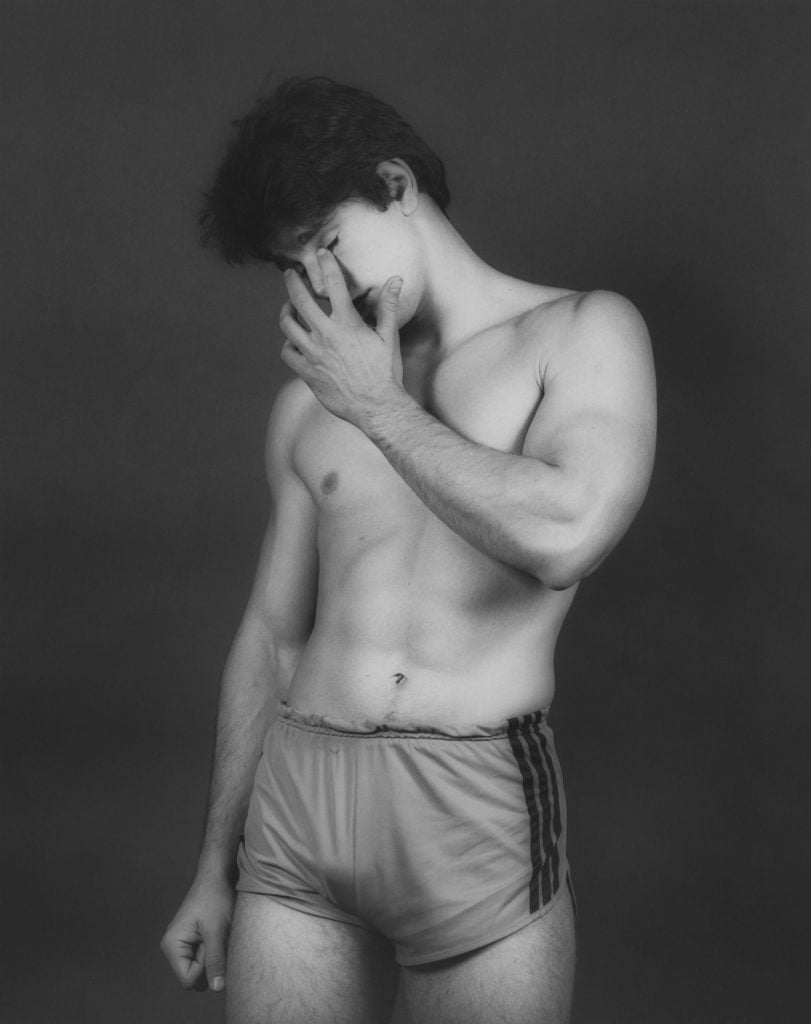
Robert Mapplethorpe, Arthur Diovanni (1982). Photo ©Robert Mapplethorpe Foundation. Used by permission. Courtesy Alison Jacques Gallery, London.
How would you say that your work and his relate?
I think that’s for other people to judge, but I guess there’s a certain directness in the work and a certain purpose which is similar. I have been working in self-portraits for many years, and he did too, and he was interested in life, in all its facets: children, men, women, fashion, and commercial photography … Much like I am. There’s not many photographers that have managed to have successful commercial and museum and gallery careers.
Yes, but, at the same time, today there seems to be less of a distance between the worlds of art and fashion that when Mapplethorpe was making work …
This is true. The art world is very interested in fashion, and the fashion world is definitely interested in the art world nowadays, they eat each other up. But at the same time, those labels don’t really matter. I think that’s another thing I might share with Mapplethorpe, and it’s the fact that it’s all about the work. He just wanted to make his work, whatever it might have been.
Also, I think he really enjoyed the glamor of doing these portrait commissions of rich and beautiful ladies, and so do I. It’s funny! It’s gives you the chance of entering a world that otherwise would be completely closed off to you. You can have fun with it, you can even joke about it. But one very important thing is that sitters have to trust you, I would never want to make someone do something which they feel uncomfortable with or I don’t feel is right for them to do.
[At this point, David Croland, Mapplethorpe’s first male model and “official boyfriend,” enters the room and rushes to hug Teller, congratulating him on the show. He should know, as in 2013 he co-curated the Mapplethorpe exhibition “Fashion Show” at the same gallery. Croland is also instrumental to Mapplethrope’s career, as he introduced the artist to curator Sam Wagstaff, who became Mapplethorpe’s long-time partner and patron.]
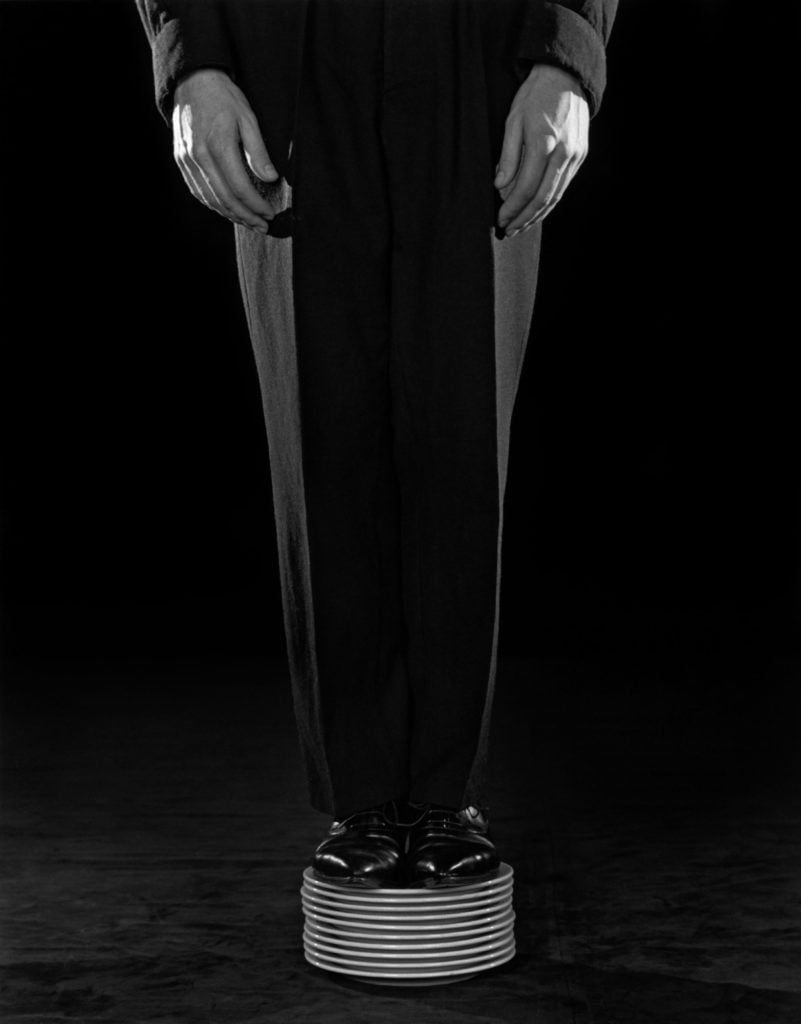
Robert Mapplethorpe, Shoes on Plates (1984). Photo ©Robert Mapplethorpe Foundation. Used by permission Courtesy Alison Jacques Gallery, London.
I’d say that photography that is confrontational and challenging is as necessary today, given the current climate, as when Man in Polyester Suit was attacked by Jesse Helms in 1989. Would you agree?
Well, everything is so politically correct now. There’s so many things we are not allowed to do, even on Instagram, where one has to cover nipples with oranges and penises with aubergines, or whatever. It’s ridiculous. I find it very problematic how the world seems to be really going backwards. Everything seems pretty unstable at the moment, with Brexit, Trump, the German election next year… But it seems that in difficult times art tends to get better, because you have strong opinions and you have to react. I don’t want my work to be antiseptic, to be hung in the waiting room of a dentist.
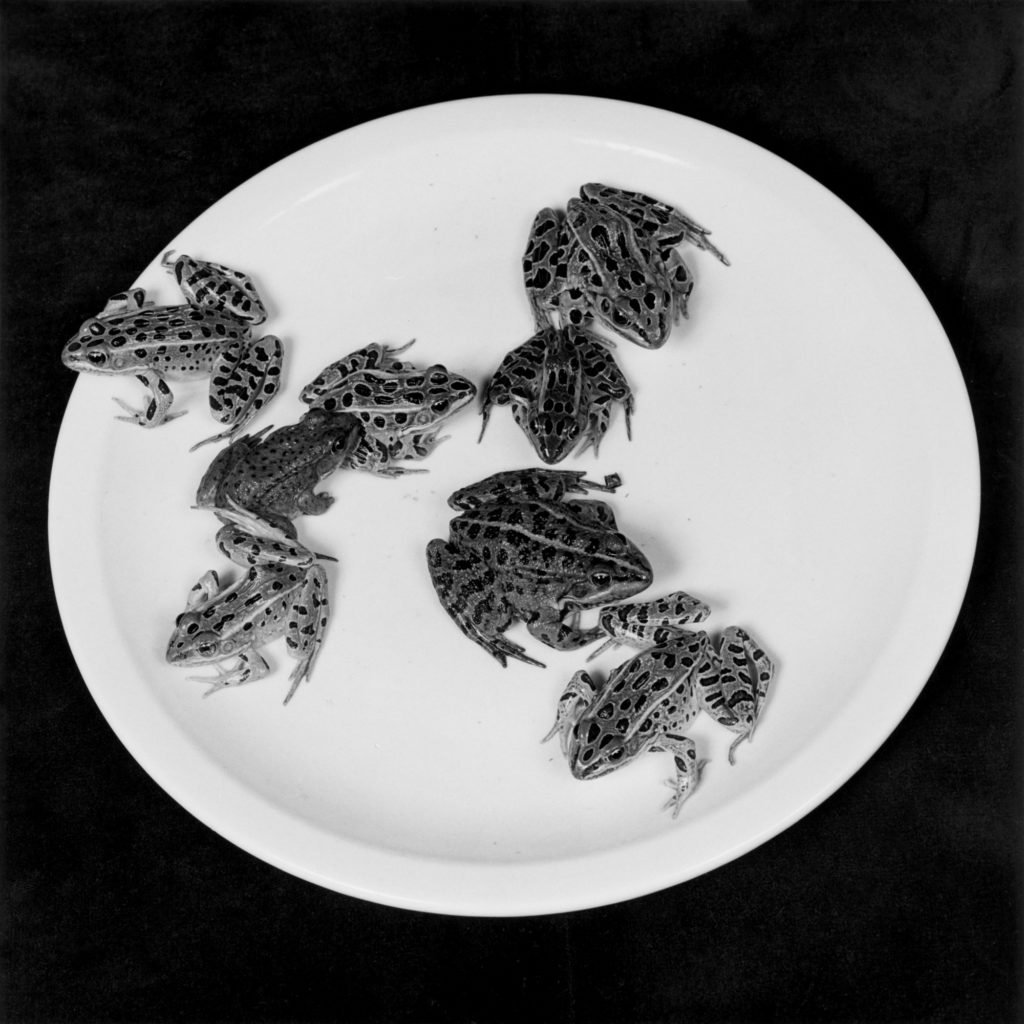
Robert Mapplethorpe, Frogs (1984). Photo ©Robert Mapplethorpe Foundation. Used by permission Courtesy Alison Jacques Gallery, London.
What’s your favorite image in the show?
From a very personal point of view, my favorite is the one of the frogs on the plate [Frogs (1984)] which is what we ended up using for the invite, because Teller means plate in German. And then here [he points to Shoes on Plates (1984)], there’s a man standing on a stack of plates! And downstairs there’s even more images with plates. So many “Tellers”! I also love the image of Lisa Lyon holding the bones.
Has you understanding of Mapplethorpe’s work changed much after doing all this research?
I obviously knew his work quite well before, but during the research process I went several times to the Foundation in New York, where the whole thing is, so I discovered a huge amount of images that hadn’t been so widely seen or shown. At the same time, this is a commercial show, so for example I couldn’t focus on the Polaroids, which are one-offs.
But I certainly knew I didn’t want to do yet another show about the sex photographs, or the flowers, first cause they’ve been widely seen, and there’s other places to see them, like the museum. I have a more particular viewpoint of his work, and my role was to shine a new, different light on the work of Mapplethorpe, and I think I might have succeeded in doing that.
“Teller on Mapplethorpe” in on view at Alison Jacques Gallery, London, from November 18, 2016 – January 7, 2017.